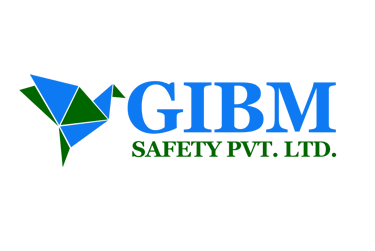Communication Skills Training: The Foundation of Organizational ExcellenceYour blog post
The correlation between communication excellence and organizational performance has never been clearer. Modern businesses operate in environments characterized by diverse teams, remote work arrangements, rapid decision-making requirements, and complex stakeholder relationships. In this context, leaders and employees who possess superior communication skills become invaluable assets capable of driving collaboration, innovation, and sustainable growth.
BLOG
4/2/20236 min read


Effective communication stands as the cornerstone of organizational success, influencing every aspect of business operations from leadership effectiveness to customer satisfaction. In today's complex business environment, communication skills training has evolved from a supplementary professional development activity to a strategic necessity that directly impacts productivity, engagement, and profitability. Research from Cambridge University demonstrates that companies with effective communication practices experience a 64% increase in productivity, 51% increase in customer satisfaction, and 43% increase in business gains.
The correlation between communication excellence and organizational performance has never been clearer. Modern businesses operate in environments characterized by diverse teams, remote work arrangements, rapid decision-making requirements, and complex stakeholder relationships. In this context, leaders and employees who possess superior communication skills become invaluable assets capable of driving collaboration, innovation, and sustainable growth.
The Strategic Importance of Communication Excellence
Communication skills training addresses fundamental business challenges that affect competitiveness, employee engagement, and operational effectiveness. According to EdStellar research, organizations prioritizing employee communication training enhance team effectiveness by 35%, improve overall productivity by 28%, and create more connected workplaces that foster collaboration and innovation.
The 2025 Gallup State of the Global Workplace report found that employee engagement has dropped to 21%, with lost productivity costing the global economy $438 billion annually. Communication training represents one of the most effective interventions for addressing this crisis, as it directly impacts manager-employee relationships, team dynamics, and organizational culture.
For mid-size companies, communication skills development is particularly crucial because these organizations typically operate with flatter hierarchies where effective communication becomes essential for coordination, decision-making, and maintaining organizational alignment across diverse functions and responsibilities.
Core Components of Comprehensive Communication Training
Effective communication skills programs integrate multiple competencies that collectively enhance individual and organizational communication effectiveness. Verbal communication excellence forms the foundation, encompassing presentation skills, meeting facilitation, persuasive speaking, and confident public speaking capabilities.
Written communication competencies enable professionals to create clear, concise, and compelling documents, emails, reports, and proposals that effectively convey information and influence decision-making. In digital-first work environments, written communication skills become increasingly critical for maintaining productivity and professional relationships.
According to AITD research, active listening skills represent perhaps the most undervalued yet impactful communication competency. Training in active listening techniques enables professionals to understand perspectives fully, identify underlying concerns, and respond appropriately to complex interpersonal situations.
Non-verbal communication awareness helps professionals understand how body language, tone, facial expressions, and other non-verbal cues affect message interpretation and relationship dynamics. This competency is essential for building trust, demonstrating empathy, and creating positive interpersonal connections.
Leadership Communication and Management Excellence
Communication training for managers delivers amplified organizational impact because leadership communication influences team performance, employee engagement, and organizational culture. Research from Coursera indicates that 72% of business leaders report that effective communication results in increased productivity, while 60% report improved employee retention following communication training initiatives.
Leadership communication training develops the ability to articulate vision clearly, inspire teams toward common objectives, provide constructive feedback, and navigate difficult conversations with confidence and empathy. These capabilities enable managers to build high-performing teams while maintaining positive workplace cultures.
Conflict resolution and difficult conversation management represent critical leadership communication skills that enable managers to address interpersonal issues constructively while maintaining team cohesion and productivity. These skills are essential for preventing minor disagreements from escalating into significant organizational problems.
Digital Communication and Virtual Collaboration
The evolution toward remote and hybrid work arrangements has created new requirements for digital communication excellence that enable effective virtual collaboration. Modern communication training addresses video conference etiquette, digital presentation skills, and asynchronous communication strategies that maintain team effectiveness across distributed work environments.
Email optimization, instant messaging protocols, and digital collaboration platform usage represent practical skills that significantly impact productivity and professional relationships in technology-enabled workplaces. These competencies ensure that digital communications enhance rather than hinder organizational effectiveness.
Virtual team leadership communication requires specialized skills for building relationships, maintaining engagement, and coordinating activities across digital platforms. These capabilities are essential for organizations seeking to maintain high performance while offering flexible work arrangements.
Cross-Cultural Communication and Global Business
Contemporary communication training increasingly addresses cross-cultural competencies that enable effective collaboration in diverse, international business environments. These skills include cultural awareness, adaptive communication styles, and strategies for navigating cultural differences in professional settings.
Global communication competencies enable organizations to build successful international partnerships, manage diverse teams effectively, and expand into new markets while maintaining positive stakeholder relationships across cultural boundaries.
Industry-Specific Communication Applications
Effective communication training recognizes that different industries present unique communication challenges and requirements. Healthcare organizations require training that addresses patient communication, interdisciplinary team coordination, and sensitive conversation management under high-pressure conditions.
Technology companies benefit from communication training that addresses technical explanation skills, cross-functional collaboration, and customer education capabilities that support product adoption and user satisfaction. Sales organizations need specialized training in persuasive communication, objection handling, and relationship building techniques.
For companies operating in diverse markets like Goa, communication training must address local cultural nuances, multilingual communication challenges, and region-specific business communication practices. Organizations such as GIBM Pvt. Ltd. in Panjim have developed customer-tailored communication programs that balance global communication best practices with local cultural understanding.
Technology-Enhanced Learning Methodologies
Modern communication skills training leverages advanced learning technologies to create engaging, practical learning experiences that accommodate diverse learning styles and busy professional schedules. Video analysis platforms enable participants to review and improve their presentation and interpersonal communication skills through objective feedback and coaching.
According to Momentum Training Solutions, virtual reality communication simulations provide safe environments for practicing difficult conversations, high-stakes presentations, and challenging interpersonal scenarios before applying skills in professional settings.
Mobile learning platforms, microlearning modules, and just-in-time communication resources enable ongoing skill development that fits within demanding professional schedules while providing immediate application opportunities.
Measuring Communication Training Effectiveness
Organizations investing in communication skills training must implement comprehensive measurement systems to track effectiveness and demonstrate return on investment. Quantitative metrics include productivity improvements, employee engagement scores, customer satisfaction ratings, and internal collaboration effectiveness measures.
Watson Wyatt Worldwide's five-year study demonstrated that companies with effective communication techniques provided shareholders with 47% greater returns, illustrating the substantial business impact of communication excellence investments.
Qualitative assessment methods, including 360-degree feedback evaluations, peer assessments, and stakeholder satisfaction surveys, provide insights into communication effectiveness improvements and their impact on professional relationships and organizational culture.
Building Sustainable Communication Cultures
Organizations seeking maximum return from communication training investments should focus on building sustainable communication cultures that reinforce and maintain skill development over time. This requires leadership modeling, ongoing reinforcement systems, and integration with performance management and career development processes.
Communities of practice, peer coaching programs, and regular communication skill refresher sessions help maintain and enhance communication competencies while building organizational communication intelligence that supports continuous improvement.
Innovation and Creative Communication
Advanced communication training increasingly incorporates creative communication methodologies, storytelling techniques, and innovation facilitation skills that enable professionals to inspire, influence, and drive organizational change through compelling communication.
These advanced skills enable professionals to communicate complex ideas effectively, build enthusiasm for innovation initiatives, and create emotional connections that motivate action and support for strategic objectives.
Future Trends and Emerging Practices
The future of communication skills training will continue evolving in response to technological advancement and changing workplace requirements. Artificial intelligence, natural language processing, and real-time communication analytics are becoming integral components of advanced communication development programs.
Neuroscience insights, emotional intelligence research, and behavioral communication science represent emerging areas that will enhance communication training effectiveness while providing deeper understanding of communication impact and optimization strategies.
Implementation Strategy and Best Practices
Successful communication training implementation requires careful needs assessment, customized program design, and ongoing support systems that reinforce learning and application. Organizations should integrate communication development with other learning initiatives while ensuring alignment with business objectives and organizational culture.
Blended learning approaches that combine formal training, practical application, coaching support, and peer learning opportunities typically achieve the best results while accommodating diverse learning preferences and professional development needs.
Return on Investment and Business Impact
Communication skills training delivers measurable business value through improved productivity, enhanced customer relationships, better employee engagement, and reduced conflict-related costs. Microsoft research indicates that 76% of employees would remain longer at companies providing communication and development support.
The connection between communication excellence and business success continues strengthening as organizations become more collaborative, customer-focused, and dependent on knowledge work that requires superior communication capabilities.
Conclusion
Communication skills training represents a fundamental investment in organizational capability that delivers sustainable competitive advantage through improved collaboration, enhanced leadership effectiveness, and superior stakeholder relationships. As business environments become increasingly complex and interconnected, communication excellence becomes essential for organizational success.
Companies that prioritize comprehensive communication development position themselves for sustained growth while creating cultures that attract and retain top talent. The evidence overwhelmingly demonstrates that communication skills training is not optional but essential for achieving organizational excellence in today's communication-dependent business environment.
" Building Industry Excellence. "
Contact Us
helpdesk@gibmsafety.com
+91 9136088864
© 2025. All rights reserved.


helpdesk@rfiresafety.com
Conversation
